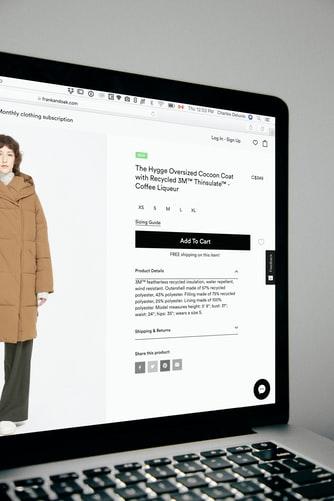Consumerism has undergone a paradigm shift today. It’s only 7 months in the year and the market is completely topsy-turvy – it isn’t even remotely close to how it was during the beginning of the year.
With the onset of the pandemic, consumer behaviors have changed, market conditions have become more volatile, priorities have become different, workforce has reduced, workspaces have evolved and what not.
If the damage has been bad for a lot of industries, the ones having it worse are those that couldn’t or didn’t adopt technology into their operations and systems. Businesses that failed to identify and acknowledge the requirement of solid tech infrastructure and in-demand technologies have succumbed to the Covid-19 situation.
This is more when it comes to the products and services industry. A lot of ventures that felt staying old-school was just right for their businesses are regretting their decisions.
On the other hand, companies that evolved, keeping in mind the benefits tech upgrades would bring in have only flourished.
Before the pandemic, a lot of companies across the world decided to go mobile-first and got an app or a website developed. They realized the importance of the on-demand economy and took the leap. They have only good things to say now.

Table of Contents
The On-demand Economy in Numbers
For those of you who are still unaware, the on-demand economy is booming by the day. To put things in perspective, here are some numbers:
- Over 42% of the Americans (86.5 million people) have used an on-demand service
- 51% of the businesses that evolved into the on-demand economy have reported profits
- It is anticipated that investments in on-demand websites and apps will increase to $335bn by the year 2025
- There has been a 5% increase in ecommerce sales from the year 2019.
- The ecommerce sales in the US during the month of April 2020 grew by 49% because of the pandemic
- The demand for electronic devices grew by 58%, books grew by 100% and groceries grew by 110% during the lockdown months in the US.
- On the other hand, 6 retailers have filed for bankruptcy in the same period.
If you’re a retailer, looking to take your business online, we suggest you do it now. This article is all about shedding light on why your business needs to prefer the on-demand model and some best ways to get started with this.
Note: This is not an offline industry Vs. on-demand industry post.
Read On
What Your Offline Store Is Missing Out On
The Chance to Offer Convenience
Convenience is the number one benefit of the on-demand economy and with an offline store, you’re missing out on the opportunity to deliver your customers that. Stepping out is becoming more uncertain by the day and at this time, customers want their products and services to reach where they are.
From their living rooms, they have this option to order what they want and be assured that their order would reach them in a very short duration.
Data and Its Inference
They say data is the digital gold and that it is becoming more expensive than oil. It’s true as in the on-demand economy, you get to know your user and audience like nowhere else. As your app or website constantly learns from your users’ activities, it allows you to offer –
- Personalized services and messages
- Specific deals and discounts in case of cart abandonments
- Uniquely engage with each of your customer
- A better way to retain your customers better
- Optimize supply-chain management
- Use artificial intelligence to target your audience better and suggest products based on their likes and preferences and more
Diverse Payment Options
With the on-demand economy, your users have the liberty to make payments through their preferred ways. They could pay using online banking methods, use digital wallets, use Google Pay, or even prefer cash-on-delivery. But this is highly unlikely in a brick and mortar store unless you have all these payment systems in your store.
Some of the other crucial reasons include the following –
- It is a highly scalable model.
- Overhead costs involved are comparatively lesser than your traditional counterparts.
- Your workforce need not be trained.

Examples of On-demand Companies That Made It Big
What you’ve been reading so far is not just a compilation of opinions and numbers but facts. They are data-driven. Several companies in this niche have made it big in their markets and have even evolved to become market players in their respective domains.
Some of the most prominent on-demand businesses include
- Uber – which is valued at around $8bn
- Airbnb – valued at around $30bn
- Several businesses like lyft, Shyp, Instacart and more valued at around $11bn
- You already know where Amazon stands in terms of the market
Services Most In Demand
If you’re planning to opt for the on-demand business model, understand that there are several popular markets that are in huge demand. They perfectly fall under the on-demand services niche. We are looking at industries like
- Food delivery
- Healthcare
- Logistics
- Transportation
- And travel
If you own an offline delivery/logistics company, you could soon find yourself amongst high-performing on-demand delivery startups with the right moves and targeting. Let’s look at some strategies and steps now.
How to Transition Into an On-demand Industry
Your Business’ Relevance
Not all businesses can blindly move into the on-demand domain. Some need proper planning and some need precise execution. The transition depends on the type of company you have set up and the type of business you intend to become.
So, the first thing is to find out how relevant your business is to the on-demand economy. If you own an apparel store, it’s ideal. If you own a restaurant, we need to brainstorm more. And if it’s a very traditional and essential business like a hardware store, we need adequate demand, market condition and maturity for a seamless transition.
Understanding of Your Target Audience
Once you’ve identified your business, you need to understand your target audience better. For this, you need answers to some of the following questions –
- Is your audience already exposed to another on-demand service in your niche?
- If yes, are there any drawbacks in the existing market condition?
- If no, why should your audience care about another on-demand business?
- How good is your audience in using technology or how good are internet services in the region you intend to operate?
- Will your audience come back to using an on-demand service or will it be a one-time affair?
As you find answers to these, you would know where your idea stands in terms of getting validation. If the answers turn out to be positive, understand that you need to transition into the on-demand economy soon.
An App or a Website
Again, this depends on the factors we’ve discussed so far. Based on your business, your target audience and the inference you’ve gotten from the questions, you need to decide if an application would make more sense to your business or an ecommerce website.
Note that when you have both, you are diluting your traffic. Growth wouldn’t be evident on both. If you have a delivery/logistics company, we recommend you approach an on-demand delivery app development company and get an app developed for your business.
They are quick, dynamic and are ideal for impulsive and quick service executions. If you have an apparel store, having an ecommerce store works best as you have better ways to drive traffic to your site, promote and engage better.
A Good Marketing Plan
Marketing plan will be of two types –
- To push downloads in case you have an app developed
- To drive traffic and increase conversion if you have an ecommerce website launched
The marketing strategies for both are completely different with mild overlaps. While search engine visibility and rankings matter for both, the content, the medium and the channels you target would vary depending on your operating mechanism.
Wrapping Up
So, now you know the importance of the on-demand economy, powerful numbers that justify its power, where your business stands, if it’s ready to move into this economy and some ways you could seamlessly do so.
We believe this is the right time to take the next step if your business has received a validation from the factors we have discussed. The market is right and the conditions don’t seem to change in the coming months and years.
The on-demand economy will continue to rise and you could very well capitalize on this if you take a wise decision right now.
Good luck!
About the Author:

Nisarg Mehta is a CEO and Chairman of Techtic Solutions, Inc. and an official member of Forbes Business Council. Nisarg has expertise in digital product discovery, design sprint, product engineering for FinTech, Healthcare & HIPAA, On-Demand & Travel industries.
Author’s Linkedin Profile:https://www.linkedin.com/in/techticsolutions/
Email: nisarg@techtic.com
Company: Techtic Solutions, Inc.
Company’s Website:https://www.techtic.com/


